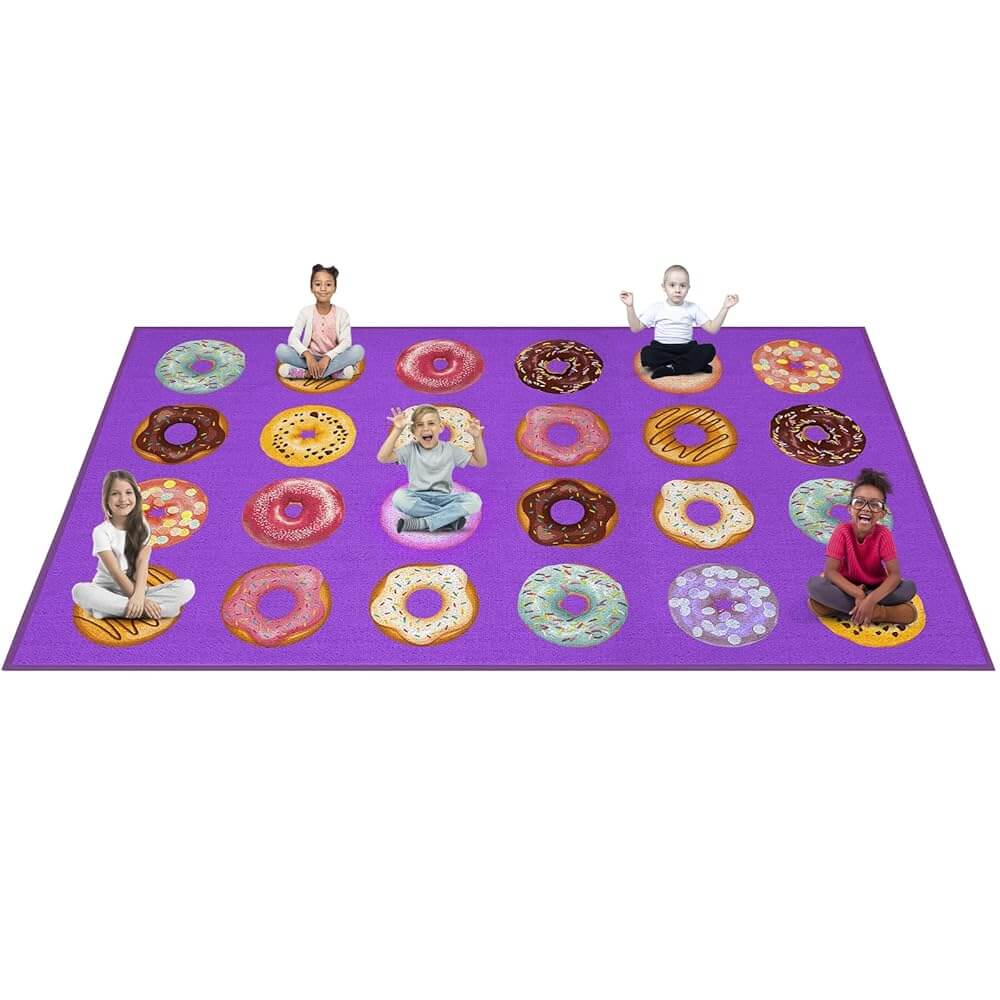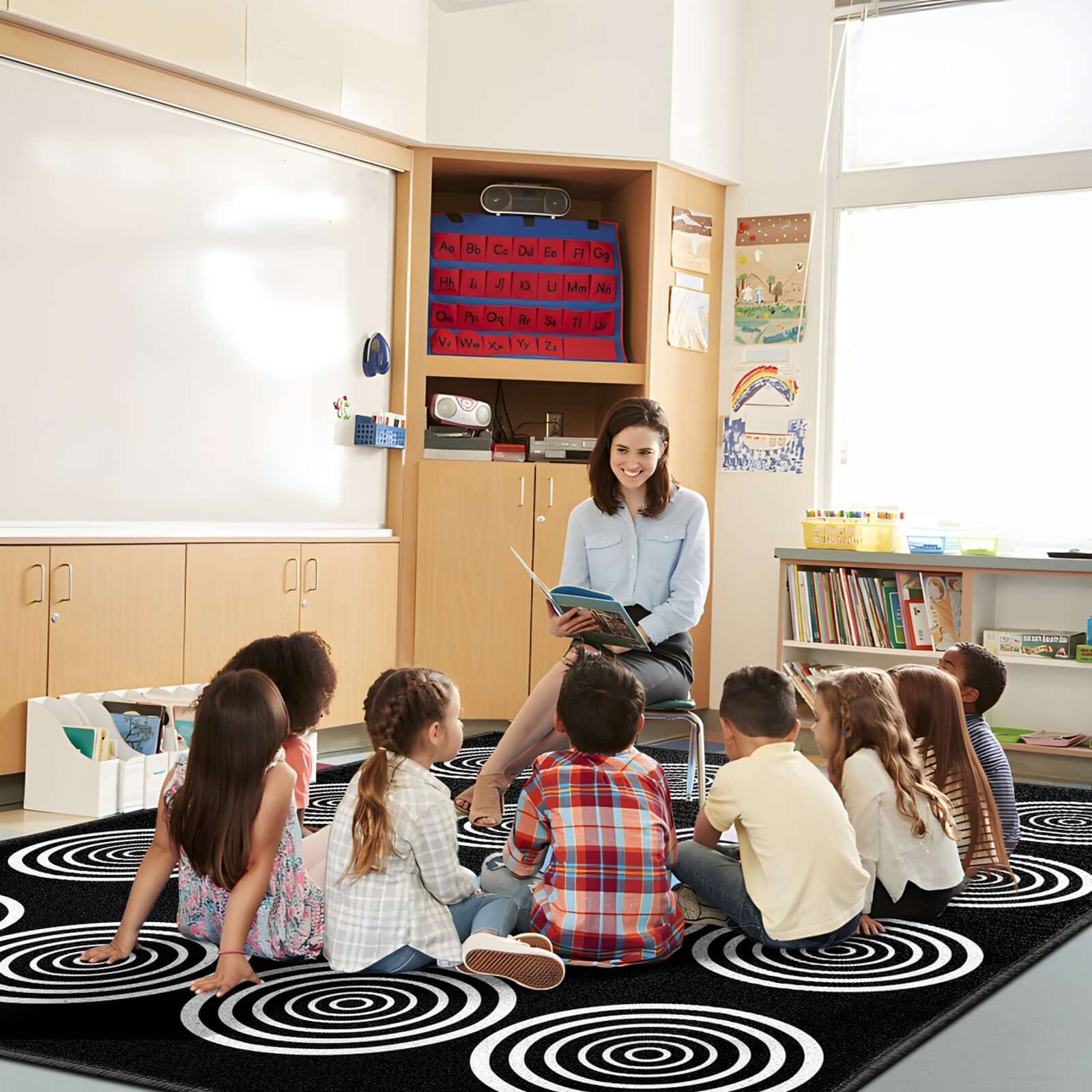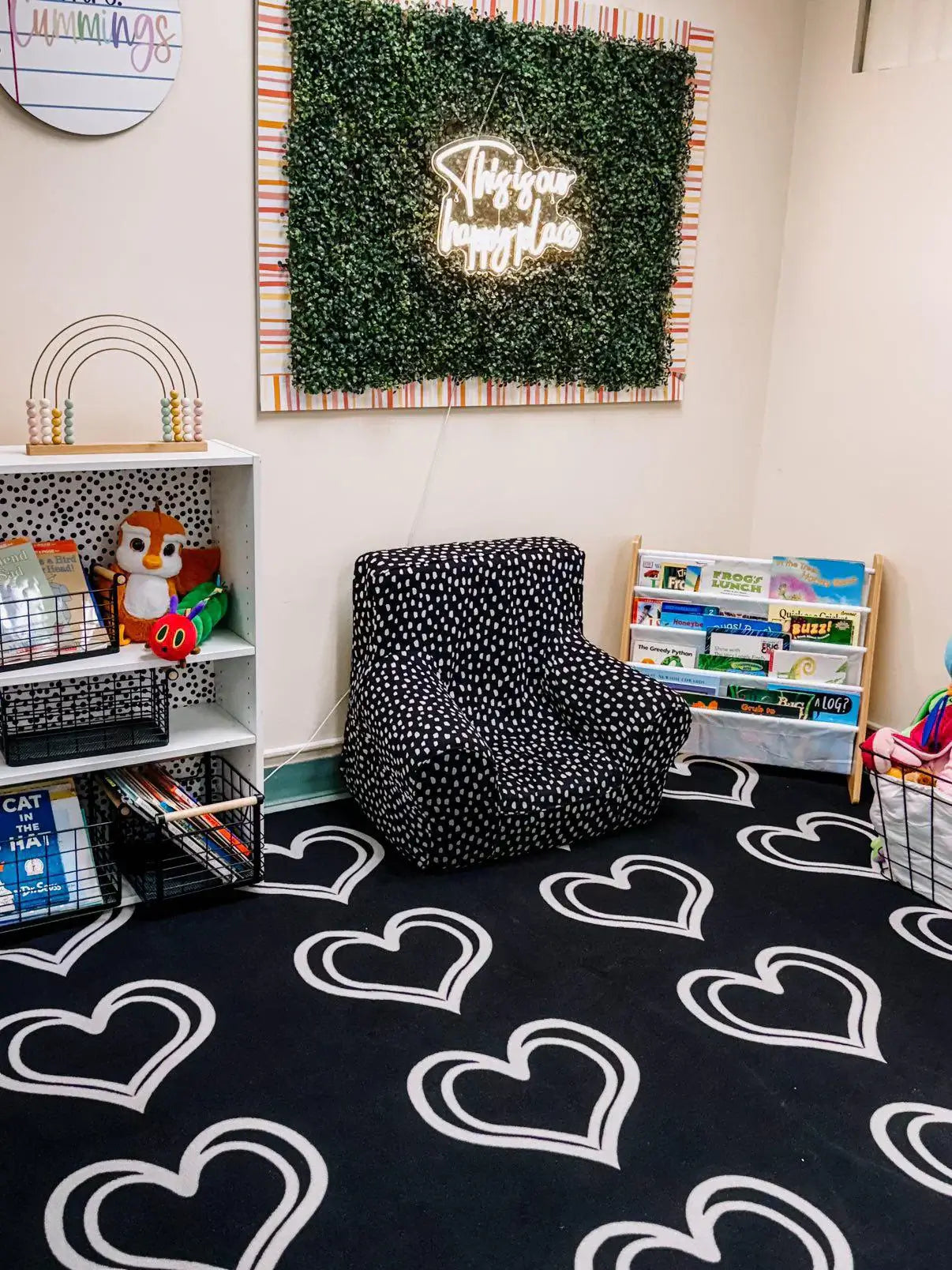The Critical Role of Rugs in Primary Education Settings
Primary years education relies heavily on floor-based activities, making classroom rugs essential infrastructure rather than mere decoration.
Research from Education Week demonstrates that well-designed learning environments can improve student achievement by up to 16% in primary grades, with floor spaces being particularly crucial for this age group.
Young children naturally gravitate toward floor activities for play-based learning, collaborative work, and comfortable positioning during instruction.
Quality classroom rugs provide the foundation for these essential educational interactions while supporting multiple developmental needs simultaneously.
Physical Development Support: Primary-aged children are still developing gross and fine motor skills.
Soft, cushioned surfaces encourage movement, stretching, and positioning that supports healthy physical development during extended floor activities.
Social Learning Foundation: Circle time, group discussions, and collaborative activities happen naturally on classroom rugs.
These experiences teach essential social skills like turn-taking, listening, and respectful interaction with peers.
Emotional Comfort: Familiar, comfortable spaces help young children feel secure in school environments.
A cozy rug area becomes a safe haven where children can regulate emotions and find comfort during challenging moments.
Age-Appropriate Design Elements for Primary Learners
Primary classroom rugs must balance educational value with developmental appropriateness, creating designs that engage without overwhelming young minds.
Educational Integration: Alphabet rugs remain fundamental tools in primary classrooms, supporting letter recognition, phonics instruction, and early reading development.
According to Reading Rockets, multisensory learning approaches that incorporate visual, auditory, and kinesthetic elements significantly improve literacy outcomes for primary learners.
Number and Math Concepts: Mathematical learning rugs featuring number lines, geometric shapes, and counting elements provide constant visual references that support numeracy development.
These tools help children understand mathematical concepts through physical interaction and spatial relationships.
Interactive Learning Features: Touch-and-feel textures, removable elements, and tactile components engage multiple senses, supporting different learning styles and maintaining attention spans appropriate for primary-aged children.
Color Psychology: Bright, cheerful colors stimulate engagement and creativity while avoiding overwhelming patterns that might distract from learning objectives.
Research shows that certain color combinations can improve focus and reduce anxiety in young learners.
Creating Effective Learning Zones in Primary Classrooms
Strategic rug placement helps define different learning areas while maintaining the flexibility essential for primary education approaches.
Reading and Literacy Corners: Dedicated reading rugs create inviting spaces for independent reading, guided reading groups, and storytelling activities.
Position these areas near natural light sources and away from high-traffic zones to maintain quiet, focused environments.
Circle Time Areas: Large, centrally located rugs accommodate whole-class instruction, morning meetings, and group discussions.
Consider rugs with subtle seating indicators to help young children understand spatial boundaries and maintain appropriate personal space.
Learning Center Definition: Smaller accent rugs can designate specific activity areas like math manipulative centers, dramatic play zones, or science exploration stations.
This spatial organization helps children understand expectations and transitions between different types of learning.
Quiet Zones: Soft, neutral-colored rugs in corners or alcoves provide spaces for children who need breaks, individual work time, or emotional regulation support.
Safety and Health Considerations for Young Learners
Primary classroom rugs must meet stringent safety standards while supporting the health needs of developing children.
Non-Toxic Materials: Young children often have close contact with floor surfaces and may occasionally put objects in their mouths.
Choose rugs certified free from harmful chemicals, VOCs, and toxic dyes. Look for GREENGUARD certification which ensures low chemical emissions suitable for children's environments.
Antimicrobial Properties: Built-in antimicrobial treatments help resist bacteria, mold, and mildew growth, particularly important in environments where spills and accidents are common.
Easy Sanitization: Primary classrooms require frequent cleaning and occasional deep sanitization.
Select rugs that can withstand regular cleaning with child-safe disinfectants without degrading or losing educational features.
Slip Resistance: Proper backing materials prevent sliding and bunching, reducing trip hazards during active play and learning activities.
Supporting Different Learning Styles Through Rug Selection
Primary-aged children exhibit diverse learning preferences, and thoughtful rug selection can accommodate these various styles effectively.
Visual Learners: Educational graphics, clear color coding, and organized visual elements help visual learners process and retain information.
World maps, alphabet displays, and number charts integrated into rug designs provide constant visual references.
Kinesthetic Learners: Textured surfaces, interactive elements, and rugs that encourage movement support children who learn through physical activity and touch.
Consider rugs with different textures or removable components that invite hands-on exploration.
Auditory Learners: While rugs primarily serve visual and tactile learners, acoustic properties that reduce echo and background noise help auditory learners focus on verbal instruction and classroom discussions.
Social Learners: Large group areas and collaborative space designs support children who learn best through interaction with peers and group activities.
Maintenance Strategies for High-Use Primary Environments
Primary classrooms experience intense daily use, making maintenance planning crucial for rug longevity and classroom health.
Daily Care Routines: Implement simple daily maintenance that children can help with, such as picking up debris before transitions.
This teaches responsibility while protecting rug investment.
Spill Management: Keep child-safe cleaning supplies readily available and establish clear procedures for addressing accidents quickly. Primary classrooms experience frequent spills from snacks, art projects, and sensory activities.
Rotation Systems: If budget allows, having seasonal rug rotations helps extend overall lifespan while providing visual variety that maintains student interest throughout the school year.
Professional Deep Cleaning: Schedule professional cleaning during school breaks to remove embedded dirt and refresh antimicrobial treatments, ensuring healthy learning environments.
Budget-Conscious Approaches for Primary Classroom Rugs
Quality primary classroom rugs represent significant investments, but strategic planning can maximize educational value while managing costs.
Prioritizing High-Impact Areas: Focus premium rug purchases on areas receiving the most use, such as circle time spaces and reading corners. Less expensive options may suffice for lower-traffic zones.
Educational Grant Opportunities: Many grants specifically target early childhood education environment improvements.
Research local education foundations, parent-teacher organizations, and corporate giving programs that support primary learning environments.
Community Partnerships: Local businesses, service clubs, and parent organizations often contribute to classroom improvement projects.
Present clear proposals showing how quality rugs support educational outcomes.
Long-Term Investment Planning: Calculate cost-per-year over expected rug lifespan. Higher-quality rugs often provide better long-term value despite higher initial costs.
Technology Integration in Modern Primary Classrooms
Contemporary primary education increasingly incorporates educational technology, requiring rugs that support digital learning tools.
Device Compatibility: Ensure rug surfaces provide stable platforms for tablets and interactive devices during floor-based technology activities.
Avoid overly plush surfaces that might interfere with device stability.
Interactive Learning Apps: Some educational rugs now feature QR codes or markers that connect to learning apps, bridging physical and digital learning experiences in age-appropriate ways.
Flexible Technology Zones: Plan rug placement to accommodate moveable technology carts, interactive whiteboards, and charging stations that support primary classroom technology needs.
Supporting Inclusive Learning Environments
Primary classroom rugs should accommodate diverse learners and support inclusive education practices.
Sensory Considerations: Children with sensory processing differences may have specific needs regarding texture, color intensity, and pattern complexity.
Consider neutral options alongside more stimulating designs to provide choices.
Physical Accessibility: Ensure rug edges are properly secured and surfaces are stable enough to support children with mobility aids or physical differences.
Cultural Sensitivity: Choose designs that reflect diverse backgrounds and avoid patterns that might exclude or misrepresent cultural groups represented in your classroom community.
Language Development: For English language learners, visual elements on rugs can provide constant vocabulary support and cultural bridge-building opportunities.
Seasonal Considerations and Flexibility
Primary classroom needs change throughout the school year, requiring flexible approaches to rug selection and arrangement.
Seasonal Learning Themes: Consider how rug designs support seasonal curriculum themes and holiday celebrations throughout the academic year.
Developmental Progression: Children's needs evolve significantly during primary years. Rug arrangements may need adjustment as students develop greater independence and different learning preferences.
Weather Considerations: Plan for increased indoor time during winter months when outdoor play is limited, potentially requiring additional floor space definition and comfort.
Conclusion: Creating Foundation Learning Spaces That Last
Primary classroom rugs serve as fundamental infrastructure supporting young learners' educational, social, and emotional development.
By carefully selecting rugs that balance educational value, safety requirements, and developmental appropriateness, educators create environments where children build essential foundational skills.
The investment in quality primary classroom rugs yields long-term benefits through improved student engagement, better classroom organization, and enhanced learning outcomes.
When young children feel comfortable, safe, and inspired by their physical learning environment, they develop positive associations with education that support lifelong learning.
Quality rugs transform primary classrooms from simple instructional spaces into dynamic learning communities where children discover, explore, and grow together.
These environments become the foundation upon which successful educational journeys are built.




Leave a comment
This site is protected by hCaptcha and the hCaptcha Privacy Policy and Terms of Service apply.